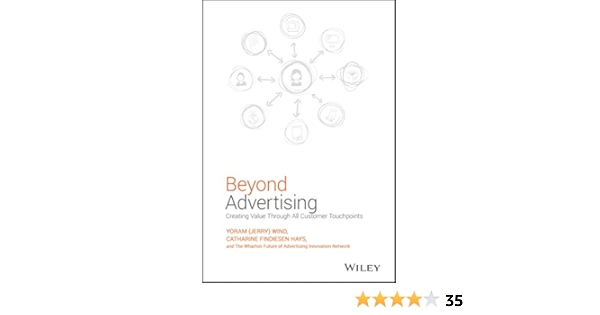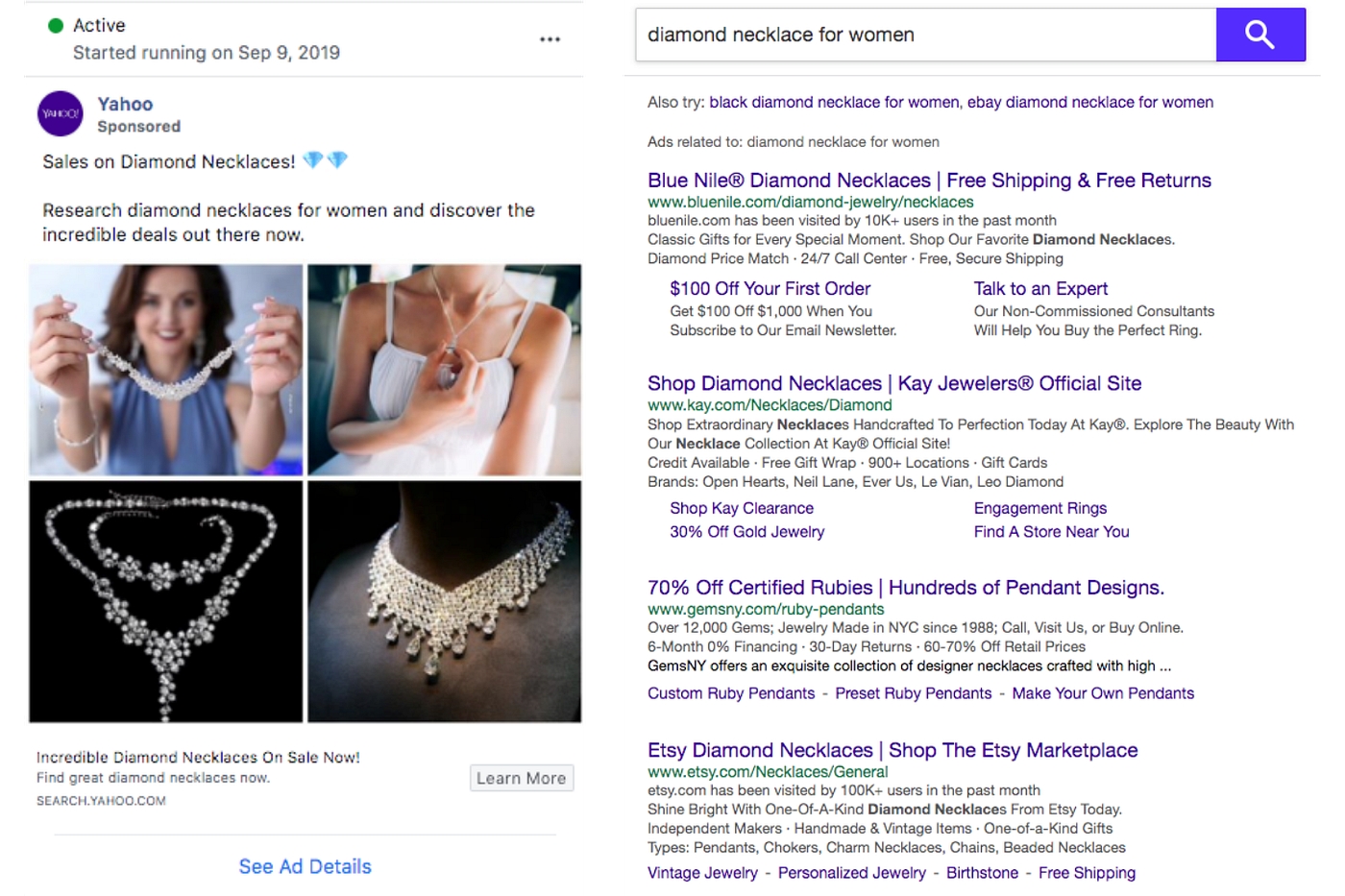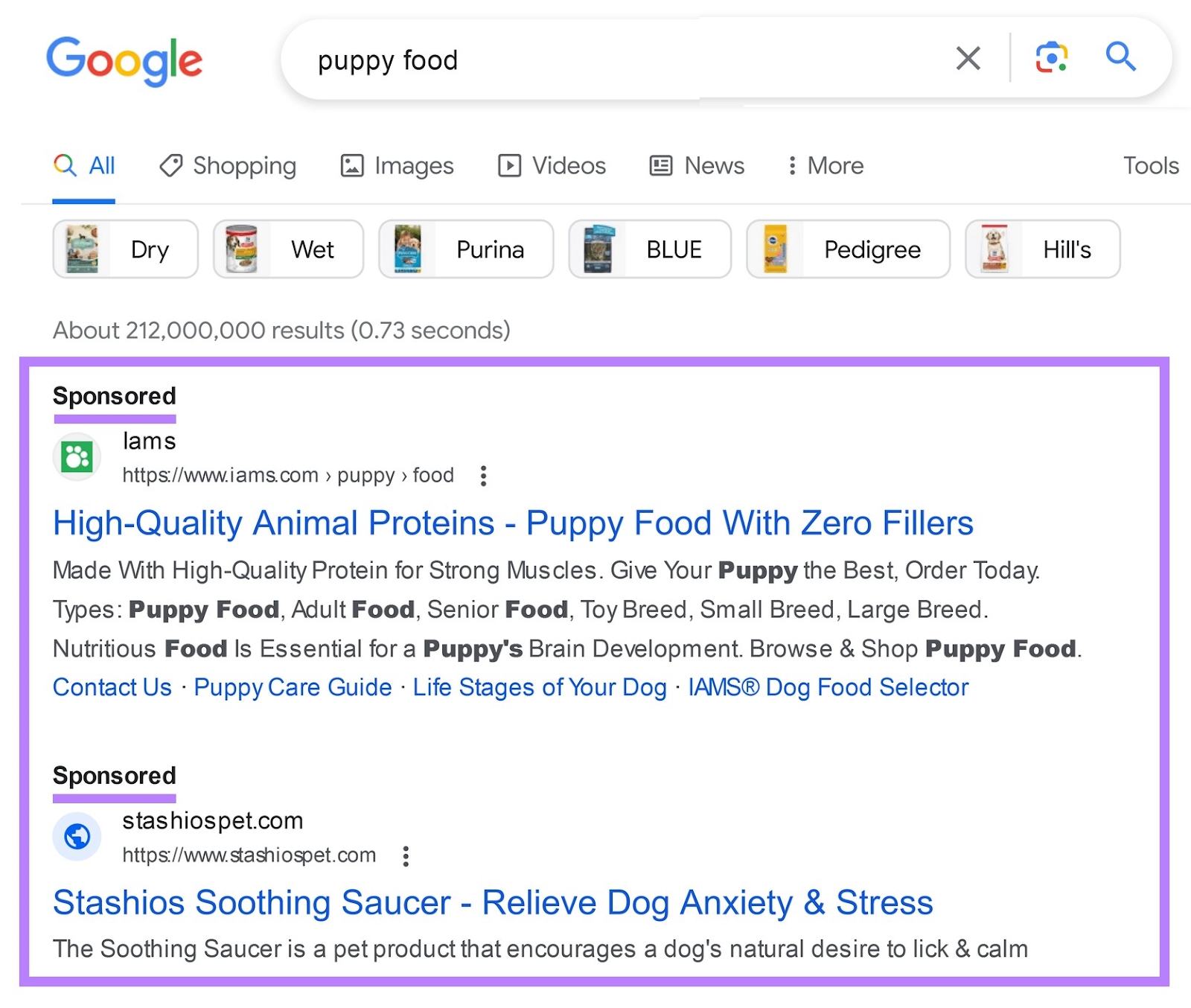Going Beyond the Click
Buy CPC Traffic | Buy Display Ads | Exclusive traffic sources | Buy Push Ads | Popunder ADS | Buy Native Ads | Buy Preroll Ads

Buy CPC Traffic | Buy Display Ads | Exclusive traffic sources | Buy Push Ads | Popunder ADS | Buy Native Ads | Buy Preroll Ads
When it comes to online advertising, many businesses focus solely on the number of clicks their ads receive. However, it is crucial to look beyond the click and understand the true value of buying ads. Clicks are just the tip of the iceberg; it is essential to dig deeper and analyze the overall impact of advertising campaigns.
Engagement
Advertising goes beyond generating clicks; it is about engaging your target audience and building brand awareness. By buying ads, businesses can reach a larger audience and attract potential customers who may not have otherwise discovered their products or services. Engaging with users through compelling ad content helps create a lasting impression and establishes a connection between the brand and the consumer.
Conversion
While clicks are important, conversions should be the ultimate goal of any advertising campaign. Clicks can be misleading, as they do not necessarily translate into sales or desired actions. By analyzing conversion rates, businesses can measure the effectiveness of their ads in terms of lead generation, sales, or other desired outcomes. Understanding the value of conversions provides actionable insights for optimizing ad campaigns and maximizing return on investment.
Brand Recognition and Trust
Buying ads helps businesses build brand recognition and trust among their target audience. When consumers repeatedly see a brand's ads across various platforms, it creates a sense of familiarity and establishes credibility. Trust plays a crucial role in purchasing decisions, and consistent ad exposure contributes to a positive perception of the brand. By investing in ads, businesses can position themselves as industry leaders and gain the trust of potential customers.
Long-Term Benefits
Although immediate results are desirable, the real value of buying ads lies in the long-term benefits they offer. Ads can have a lasting impact on a brand's reputation, visibility, and customer perception. By continuously investing in advertising, businesses can reinforce their position in the market, stay top of mind with consumers, and remain competitive against their rivals.
In conclusion, the value of buying ads extends well beyond simple clicks. Engaging with users, driving conversions, building brand recognition and trust, as well as enjoying long-term benefits are all critical aspects to consider. By understanding the holistic value of advertising, businesses can make informed decisions and unlock the full potential of their marketing strategies.
The Importance of Advertisements
Advertisements play a crucial role in today's digital world. They serve as a powerful tool to promote products and services, and to connect businesses with their target audience. With the rise of online advertising, the impact of ads has become more significant than ever before.
One of the primary reasons why advertisements are important is that they help businesses increase their visibility and raise brand awareness. In a crowded marketplace, it is essential for companies to differentiate themselves and stand out from the competition. Well-placed and well-designed ads enable businesses to grab the attention of potential customers and build a strong brand presence.
Moreover, advertisements are instrumental in driving sales and generating revenue. By showcasing their products or services in ads, businesses can entice customers to make a purchase. Whether it's through catchy taglines, compelling visuals, or informative content, advertisements have the power to influence consumers' purchasing decisions and increase sales.
Another significant aspect of advertisements is their ability to provide valuable information to consumers. Through ads, businesses can educate their target audience about the benefits and features of their products. Ads can also be used to share important updates, promotions, and discounts, keeping customers informed and engaged.
In addition, advertisements contribute to the overall growth and success of businesses. Increased brand visibility and sales ultimately lead to higher profits and market dominance. By investing in targeted and effective advertising campaigns, businesses can expand their customer base, enter new markets, and achieve long-term success.
Overall, the importance of advertisements cannot be overstated. They are a vital component of any marketing strategy and play a significant role in the growth and profitability of businesses. By leveraging the power of advertisements, businesses can boost their visibility, increase sales, and build strong relationships with their customers.
To learn more about the effectiveness of advertisements and how you can leverage them to grow your business, consider exploring the benefits of rtb advertising. This innovative form of advertising allows businesses to capitalize on real-time bidding to reach their target audience with precision and maximize their return on investment.
Enhancing Brand Awareness
One of the key goals for advertisers is to enhance brand awareness. In an increasingly competitive market, it is important for brands to make a lasting impression on potential customers.
Buying ad space allows brands to have a presence in front of their target audience. When users see ads repeatedly, it helps to create familiarity and recognition. This repeated exposure is crucial in establishing a brand in the minds of consumers.
One effective way to enhance brand awareness is through push ads. Push ads are a form of advertising that uses push notifications to reach users. These notifications are sent directly to the user's device, making them highly visible and hard to ignore.
With push ads, brands have the opportunity to capture the attention of users and make an immediate impact. The high visibility and direct delivery of push notifications make them an effective tool for enhancing brand awareness.
In addition to push ads, other advertising strategies such as display ads, video ads, and social media ads can also contribute to brand awareness. Each platform offers unique features and benefits that can help brands reach their target audience and build brand recognition.
By investing in various advertising channels and utilizing engaging and creative ad formats, brands can enhance their brand awareness and create a strong presence in the market.
Overall, buying ads is an effective strategy for enhancing brand awareness. It allows brands to reach their target audience, create familiarity, and make a lasting impression. By utilizing different advertising channels and formats, brands can effectively enhance their brand awareness and establish themselves in the minds of consumers.
Targeted Audience Reach
One of the key advantages of buying ads is the ability to reach a targeted audience. Rather than casting a wide net and hoping to catch some interested users, targeted ads allow advertisers to focus their efforts on specific demographics or interests. By identifying the characteristics of their ideal customers, advertisers can create ads that are more likely to resonate with their target audience.
Targeted audience reach is especially important for businesses with niche products or services. These businesses often have a limited customer base, and reaching the right customers is crucial for their success. By buying ads that specifically target their ideal audience, they can ensure that their message reaches the people who are most likely to be interested in their offering.
Customization and Personalization

Buying ads also offers the opportunity for customization and personalization. Ad platforms provide a range of targeting options, including demographics, interests, and behaviors, allowing advertisers to tailor their ads to specific groups of people. This level of customization can result in higher engagement and conversion rates, as the ads are more relevant and appealing to the intended audience.
Moreover, targeted ads can be personalized based on the data collected about individual users. Advertisers can use this data to deliver ads that are tailored to the user's browsing history, previous interactions, or purchase behavior. This level of personalization increases the chances of capturing the user's attention and driving them to take the desired action, whether it's making a purchase, signing up for a newsletter, or downloading an app.
Higher Return on Investment

Targeted audience reach also leads to a higher return on investment (ROI) for advertisers. By reaching a specific audience that is more likely to be interested in their product or service, advertisers can maximize the impact of their ads. This means that they are more likely to see a higher conversion rate and generate more revenue from their ad spend.
Additionally, targeting ads can help to reduce wasteful ad spend. By focusing on the most relevant audience, advertisers can avoid showing ads to people who are unlikely to convert. This optimization of ad targeting can lead to cost savings and a more efficient use of advertising budget.
In conclusion, targeted audience reach is a valuable aspect of buying ads. It allows advertisers to customize their ads and reach the people who are most likely to be interested in their offering. This targeted approach can result in higher engagement and conversion rates, ultimately leading to a higher return on investment for advertisers.
Driving Conversions and Sales
While clicks are important for measuring the effectiveness of an ad campaign, the ultimate goal for advertisers is to drive conversions and sales. Conversions refer to the desired action that a user takes after clicking on an ad, such as making a purchase, signing up for a newsletter, or filling out a contact form.
One way to drive conversions and sales is by optimizing the landing page that users are directed to after clicking on an ad. The landing page should be relevant and provide a seamless transition from the ad to the desired action. A well-designed landing page can help increase user engagement and improve the chances of conversion.
Another important factor in driving conversions and sales is targeting the right audience. Advertisers should carefully consider who their ideal customers are and tailor their ads to appeal to this specific group. By reaching the right audience, advertisers can increase the likelihood of conversions and sales.
Tracking and Analytics
In order to understand the value of buying ads and their impact on conversions and sales, it is crucial to implement tracking and analytics tools. These tools provide valuable data and insights into how users are interacting with the ads and the subsequent conversion actions.
Tracking and analytics tools can provide information such as the number of conversions generated from an ad campaign, the average cost per conversion, and the overall return on investment. This data can help advertisers make informed decisions about their ad strategies and allocate their advertising budgets effectively.
With the right tracking and analytics tools in place, advertisers can also identify any bottlenecks or areas for improvement in the conversion process. This allows them to make necessary adjustments and optimize their ad campaigns to drive even better results.
The Role of Ad Creatives

Effective ad creatives play a significant role in driving conversions and sales. Advertisements that are visually appealing, attention-grabbing, and clearly convey the value proposition are more likely to capture the user's interest and compel them to take the desired action.
Furthermore, ad copy that is persuasive and compelling can also influence conversions and sales. A well-crafted message that speaks directly to the target audience's needs and desires can create a sense of urgency and encourage them to make a purchase or take the desired action.
In conclusion, while clicks are important, the ultimate goal for advertisers is to drive conversions and sales. By optimizing landing pages, targeting the right audience, implementing tracking and analytics tools, and creating effective ad creatives, advertisers can increase the likelihood of achieving their desired conversion goals.
Building Customer Trust and Loyalty

When it comes to online advertising, building trust and loyalty with customers is crucial. Trust is the foundation of any successful relationship, including the one between a business and its customers. In order to build trust, it is important to understand the needs and expectations of your target audience.
1. Understanding your customers

One of the first steps in building trust is understanding your customers. This includes identifying their needs, preferences, and pain points. By collecting data and analyzing customer behavior, you can gain insights into what motivates your customers to make a purchase and how to effectively target them with your advertising campaigns.
A great way to understand your customers is to create buyer personas. These are fictional profiles that represent different segments of your target audience. By creating detailed buyer personas, you can tailor your advertising messages to resonate with each segment, increasing the likelihood of building trust and loyalty.
2. Providing value
Building trust and loyalty also requires providing value to your customers. This means going beyond simply selling a product or service. Instead, focus on how your product or service can solve a problem or meet a specific need for your customers.
One effective way to provide value is by offering informative and educational content. This can include blog posts, articles, videos, or tutorials that address common questions or challenges faced by your target audience. By providing valuable content, you position yourself as an expert in your field and establish trust with your customers.
3. Consistency and transparency

Consistency and transparency are key elements in building trust and loyalty. Consistency means delivering on your promises and providing a consistent experience to your customers across all touchpoints, from your website to your social media channels.
Transparency involves being honest and open with your customers. This includes clearly communicating any potential risks or limitations associated with your product or service. By being transparent, you build trust and show your customers that you have nothing to hide.
Increased customer retention
Word-of-mouth referrals
Improved brand reputation
Higher customer lifetime value
Increasing Website Traffic

One of the primary goals of running online ads is to increase the traffic to your website. By driving more visitors to your site, you have a higher chance of converting them into customers or achieving your desired outcomes. Here are some effective strategies to help increase website traffic:
Optimize your website for search engines: Implementing SEO techniques, such as using relevant keywords, creating quality content, and optimizing meta tags, can significantly improve your website's visibility and organic traffic.
Create compelling and shareable content: Publish high-quality, engaging content that resonates with your target audience. This can include blog posts, videos, infographics, or other multimedia formats. Encourage your visitors to share your content across social media platforms to expand your reach.
Utilize social media: Establish a strong presence on popular social media platforms like Facebook, Twitter, Instagram, and LinkedIn. Regularly post engaging content and interact with your followers to drive them to your website.
Guest blogging: Collaborate with influencers or industry experts to write guest posts for their blogs. This helps you tap into their existing audience and direct traffic back to your website.
Invest in paid advertising: Consider running paid advertisements on platforms like Google AdWords, Facebook Ads, or LinkedIn Ads. Target your ads to reach a specific audience that is likely to be interested in your products or services.
Partner with affiliates: Form partnerships with affiliates who can promote your products or services on their websites or through their marketing channels. Offer them incentives, such as commissions or referral bonuses, to drive traffic to your website.
Utilize email marketing: Use email marketing campaigns to reach out to your existing customer base and encourage them to visit your website. Include links to relevant content or promotions to entice click-throughs.
Engage in online communities: Join relevant forums, discussion boards, or social media groups related to your industry or niche. Participate in discussions and provide valuable insights to establish yourself as an authority and attract traffic to your website.
Improve website loading speed: Optimize your website's performance by minimizing page loading times. Slow-loading websites can deter visitors and negatively impact your traffic.
Track and analyze website metrics: Use tools like Google Analytics to monitor your website's performance and identify areas for improvement. By understanding your website traffic patterns and user behavior, you can refine your strategies to drive more traffic.
By implementing these strategies, you can attract more visitors to your website and ultimately increase conversions and achieve your business objectives.
Measuring Ad Performance
Measuring ad performance is crucial for advertisers to determine the effectiveness of their ad campaigns and make informed decisions about their advertising strategies. By analyzing key metrics, advertisers can gain valuable insights into the performance of their ads and optimize future campaigns for better results.
Here are some important metrics that advertisers commonly use to measure ad performance:
Impressions: This metric measures the total number of times an ad is displayed to users. It provides an indication of the reach of an ad campaign.
Click-through rate (CTR): CTR measures the percentage of users who click on an ad after seeing it. A high CTR indicates that the ad is engaging and relevant to users.
Conversion rate: The conversion rate measures the percentage of users who complete a desired action, such as making a purchase or filling out a form, after clicking on an ad. It helps advertisers evaluate the effectiveness of their ads in driving conversions.
Cost per click (CPC): CPC is the average amount advertisers pay for each click on their ads. It helps advertisers determine the cost-effectiveness of their campaigns and optimize their budget allocation.
Return on ad spend (ROAS): ROAS measures the revenue generated for every dollar spent on advertising. It allows advertisers to assess the profitability of their ad campaigns and allocate resources efficiently.
When measuring ad performance, it is important to consider the specific goals and objectives of the ad campaign. Different metrics may be more relevant depending on whether the goal is to increase brand awareness, drive website traffic, or generate conversions. By monitoring these metrics regularly and making data-driven decisions, advertisers can optimize their ad campaigns and achieve better results.
What is the value of buying ads?
The value of buying ads is that it allows businesses to reach a larger audience and increase brand awareness, leading to potential sales and revenue growth.
How can buying ads benefit a business?
Buying ads can benefit a business by increasing visibility, driving traffic to their website or physical store, and generating leads and conversions. It can also help businesses target specific audiences and track the success of their advertising campaigns.
What are the advantages of buying ads over other forms of marketing?
One advantage of buying ads over other forms of marketing is that it offers precise targeting options, allowing businesses to reach their ideal customers. Ads can also be highly customizable and can be adjusted in real-time based on the success of the campaign. Additionally, buying ads provides businesses with measurable results, allowing them to track the return on investment.
How can businesses measure the success of their ad campaigns?
Businesses can measure the success of their ad campaigns through various metrics such as click-through rates, conversion rates, and return on ad spend. They can also use tracking tools and analytics to monitor website traffic and customer engagement resulting from the ads.
Are there any risks or challenges associated with buying ads?
Yes, there are risks and challenges associated with buying ads. Ad fraud and click fraud are common issues that can result in wasted ad spend. It can also be challenging for businesses to effectively target their desired audience and stand out among competitors. Additionally, ad platforms are constantly evolving, so businesses need to stay updated on the latest trends and strategies to get the most out of their advertising efforts.
What is the purpose of the article?
The purpose of the article is to provide an understanding of the value of buying ads beyond just clicks.
Buy CPC Traffic | Buy Display Ads | Exclusive traffic sources | Buy Push Ads | Popunder ADS | Buy Native Ads | Buy Preroll Ads
2022-2024 @ Beyond the Click: Understanding the Value of Buying Ads